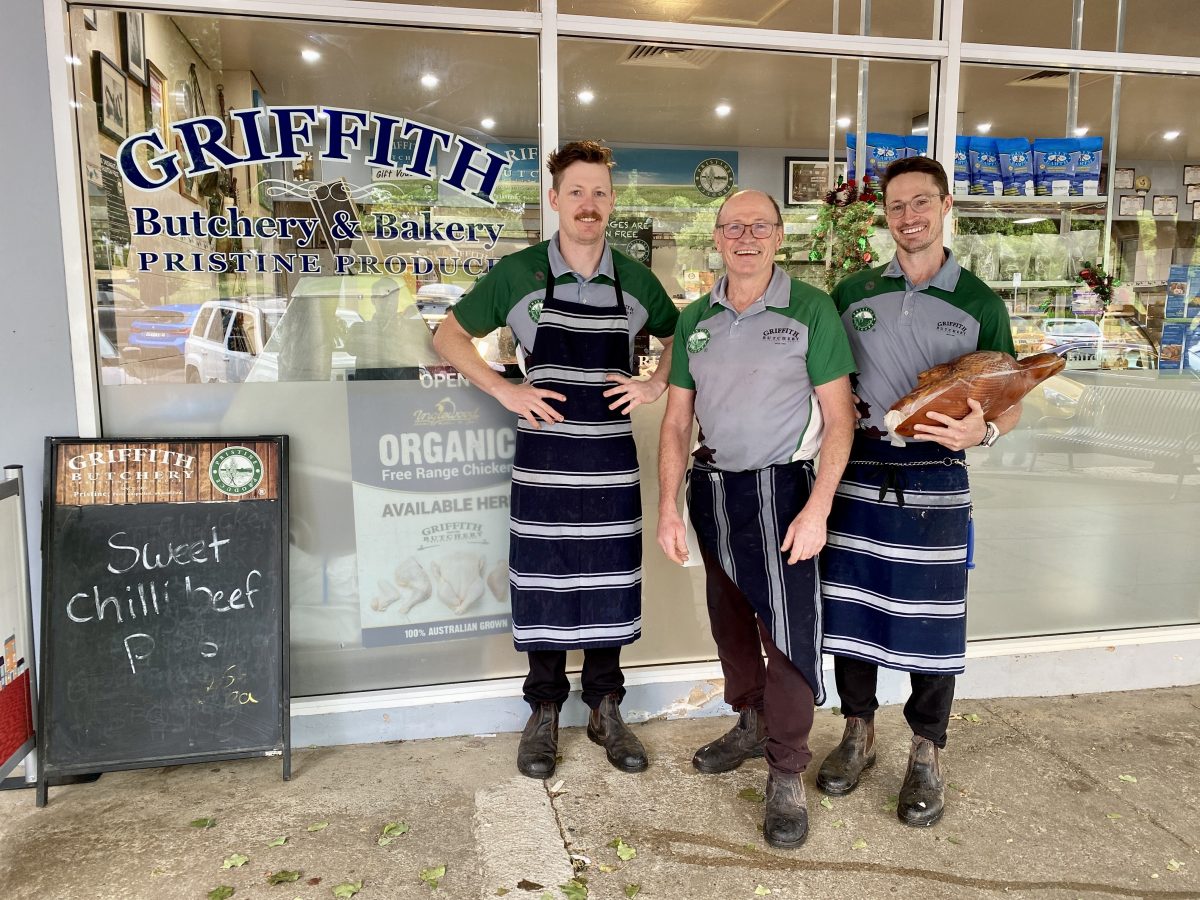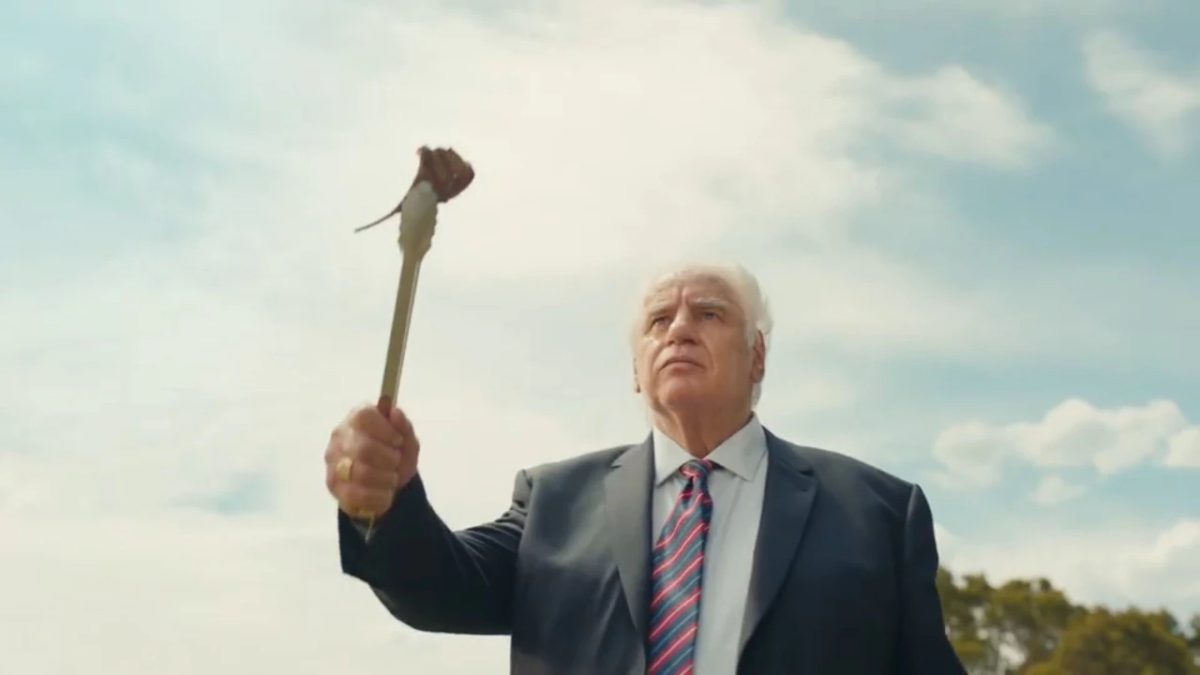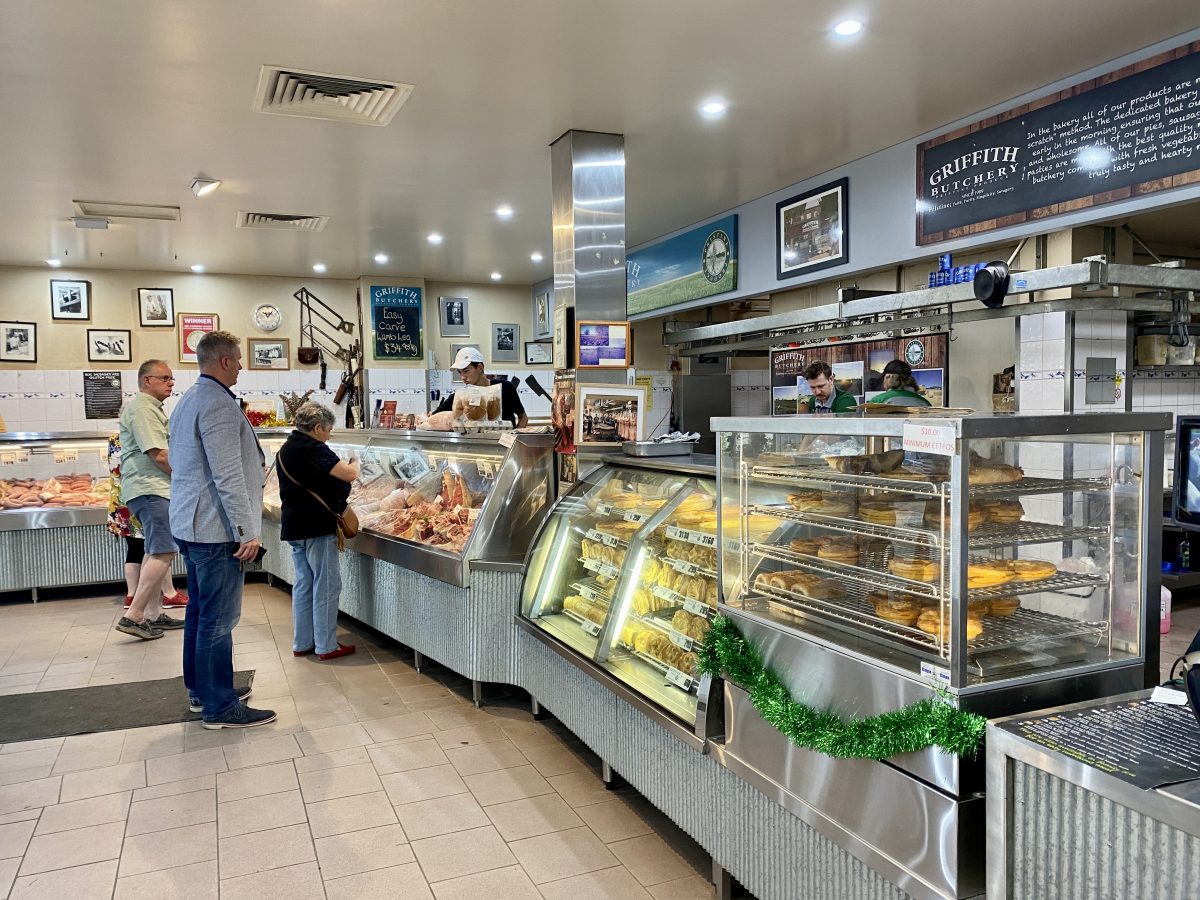
Richard Odell (centre) and staff at the Griffith Butchery & Bakery. Photo: James Coleman.
It’s January, which for Griffith butcher Richard Odell means it’s time for the smoked hams to move over. It’s lamb cutlet season.
Or lamb kebabs.
“For the first time in a long time, I cooked eight of our lamb kebabs – which we cover in our own marinade – and just hit them on the barbecue, and damn, they were good,” he says.
Every year, Richard sees a spike in the number of buyers before January has even arrived, let alone on Australia Day.
“It is definitely a thing, on Australia Day and also around Easter. Dare I say, people start stocking up around Christmas after they’ve finished their ham and want to bring a lamb roast down to the coast with them.”
As for why? You probably know.
In 1991, Meat and Livestock Australia (MLA) launched the ‘We Love Our Lamb’ campaign in an effort to drive demand for local lamb by promoting it as Australia’s national dish. It’s been back every January since, with tongue-in-cheek humour courtesy of ex-AFL footballer and ‘lambassador’ Sam Kekovich.
“They’ve made it an Australia Day thing because the ads have been so funny,” Richard says.
“A bit crass, but funny, and people get in on it.”
This year’s ad, released this week, is about “roasting the comments section”, according to MLA.
Over the course of three minutes, the ad shows how Australians seem to be “perpetually stuck” in the social media comments section, “fighting over everything like the ethics of dog grooming to how to make a cup of tea”.
“That is until the ultimate unifier, the humble lamb cutlet, appears to remind us that we have more in common and are much kinder than we realise,” a statement from MLA reads.
“There’s no better way to bring everyone together than an Aussie lamb BBQ,” MLA marketing and insights general manager Nathan Low added.

Star of the Australian Lamb ads, Sam Kekovich. Photo: Australian Lamb.
It seems to be working.
For the year to September 2024, a total of 488,566 tonnes of lamb meat were produced across Australia, almost as much as the full year of 2023, which was the highest on record.
“Consumers have also continued to show their support for lamb on the back of these campaigns,” Nathan continued.
“For example, during the six-week campaign in 2024, purchase volume increased 18.9 per cent compared to the previous year and purchase volume per trip increased 9 per cent compared to the previous year.”
The Griffith Butchery has received its lamb, as well as its beef and veal, from a farmer in Cootamundra since – and Richard remembers the exact date of the first delivery – 2 November 1990.
“We’ve had a weekly delivery ever since from the same farmer, and twice a week during the lockdowns,” he says.
Richard was introduced to Ron Ward of Bellevue by a friend, and what won him over was the farmer’s painstaking attention to detail.
“He has been so focused on getting the soil fertility right over the decades, it’s perfect,” Richard says.
Rather than the “grass-fed” meat you might get from the supermarket, Ron makes the point his are “pasture-fed” with a variety of plants to create “health in our animals as well as making the farming seasonally adaptive”.
Bellevue has also not used weedicide, pesticide, fungicide or herbicide on the soil since 1998.

Inside the Griffith Butchery. Photo: James Coleman.
The result?
“Well, there’s the rich colour of the meat and the eye muscle development is magic,” Richard says.
“If an animal hasn’t had the right amount of nutrition at the major growing points in its life, you’ll have bigger bones and less meat, whereas his have a higher meat-to-bone ratio.”
In the end, it might take 15 months to make a packet of six lamb chops, but it’s worth it.
“It’s like no other lamb in the southern hemisphere.”












